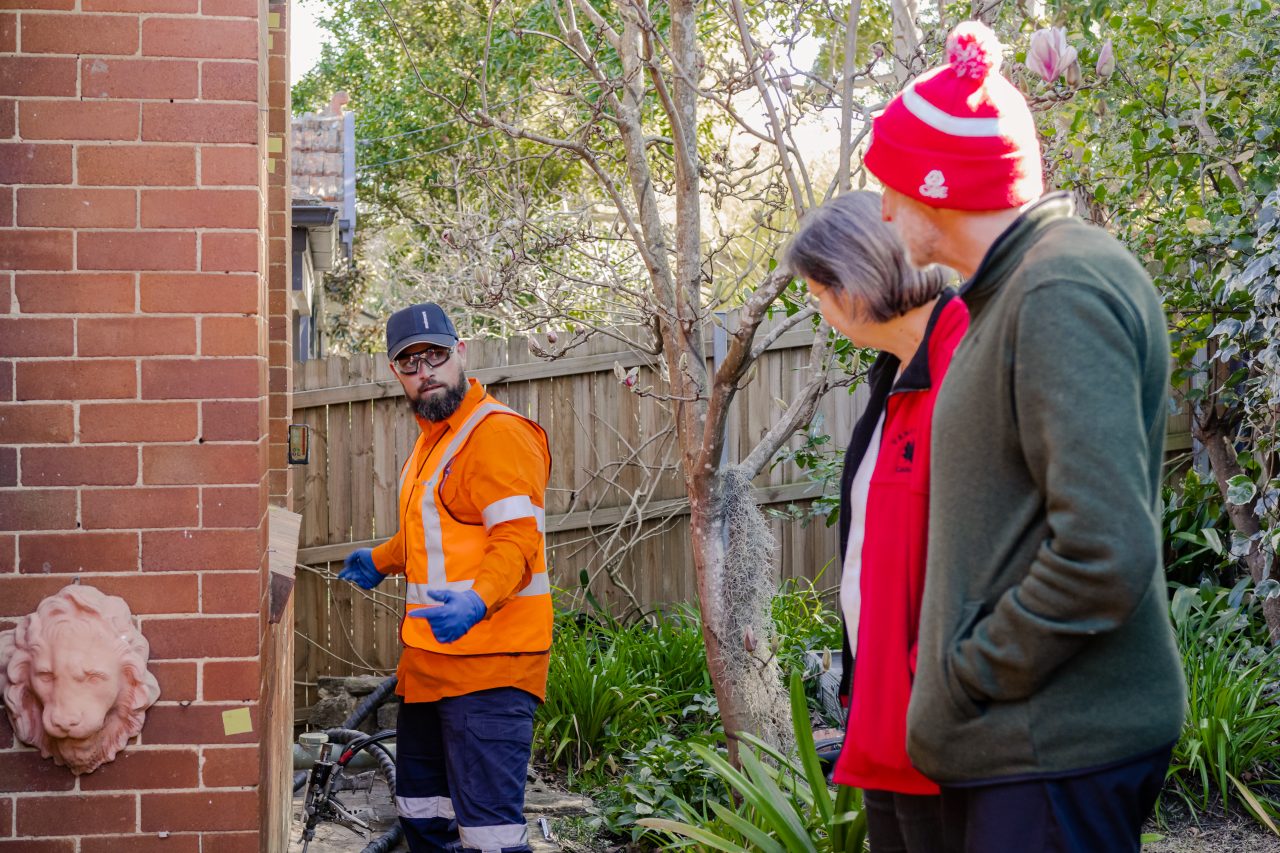
Resin Underpinning
Underpinning Solutions for Cracked Walls and Foundation Settlement
At Mainmark, we specialise in providing cost-effective and non-invasive underpinning solutions for homes and commercial properties experiencing cracked walls, foundation settlement, or house subsidence. If you’ve noticed cracks in walls, cracked bricks, or a cracked brick wall, it’s often a sign of deeper structural issues that need immediate attention.
Understanding Cracked Walls and Foundation Settlement
Cracks in your walls can occur for various reasons, but one of the most common causes is foundation settlement. Over time, the soil beneath your property can shift or sink, leading to uneven support and structural damage. This can create small or large cracks in your walls, and in more severe cases, you may notice cracked brick walls or cracked bricks around your home. Left unaddressed, foundation issues can lead to more significant damage and costly repairs.

What is Underpinning?
Underpinning is a process that strengthens and stabilises the foundation of a building. Traditional underpinning methods involve excavation and the use of concrete to provide additional support. However, Mainmark offers a modern alternative to traditional concrete underpinning through our advanced resin injection technique.
Resin Injection: A Modern Solution for Cracked Walls
Our resin injection underpinning solution is a highly effective method to address foundation issues and cracks in walls. This innovative technique involves injecting resin material into the ground beneath your home or building. As the resin expands, it fills voids, providing ground improvement and level correction to the structure. This method is non-invasive, quick, and causes minimal disruption and to your property.

Signs of Foundation Settlement and House Subsidence
If your home or building is experiencing foundation settlement or house subsidence, it’s crucial to act quickly to avoid further damage. Look out for these common signs:
- Cracks in walls, especially around windows and doors
- Cracked bricks or cracked brick walls
- Uneven floors or sinking foundations
- Doors and windows that are difficult to open or close
At Mainmark, we offer free site inspections to assess the extent of the damage and recommend the best resin injection underpinning solution for your property.

How Much Does Resin Injection Underpinning Cost?
The cost of underpinning a house using resin injection varies based on the size of the property and the extent of foundation damage.
However, resin underpinning is generally more cost-effective compared to traditional methods due to its efficiency and lower labour requirements.
Contact us for a personalised quote based on your property’s needs or see our detailed underpinning guide.

Why Choose Mainmark for Resin Injection Underpinning?
Since 1989, Mainmark is the trusted leader in foundation repair and resin injection underpinning.We have successfully helped thousands of homeowners and businesses fix cracked walls, address foundation settlement, and resolve house subsidence issues.
Our team of experts is committed to providing cost-effective, efficient, and long-lasting innovative solutions backed by our 50-year product warranty.
Maimark – Your Trusted Ground Engineering Partner:
- The pioneers of Resin Injection technology in Australia – 35 years experience
- 84,000 + Jobs Completed
- ISO Accreditation
- In-house Engineers
Don’t let cracks in walls or foundation settlement compromise the safety and value of your property. If you’re dealing with cracked walls, cracked brick walls, or suspect house subsidence, contact Mainmark today for a free, no-obligation site inspection. Our expert team will assess your property and provide the right concrete underpinning solution to restore your property’s structural integrity.
House Underpinning
The traditional method
|
Excavation – Heavy machinery is required to dig large holes to depths often up to 3 metres.
|
|
Soil removal – large quantities of dirt and rock are loaded onto dump trucks and transported away from the site
|
|
Pouring Concrete– filling the holes or “piers” with concrete can be complex and logistically challenging depending on the site.
|
|
Curing time – concrete can take several days to get to strength.
|
House Resin Injection
The modern alternative
|
Tiny holes– Teretek is applied through keyholes, typically 6mm to 16mm in diameter.
|
|
Clean and quiet – The process is clean and quiet, has minimal impact on residents.
|
|
Resin injection – The resin injects into the ground and expands in the ground within minutes.
|
|
Curing time – 30 minutes. You can even use the building during the process.
|
How we get your home back to level
in as little as a day with Resin Injection Underpinning.
Features & Benefits of Resin Injection Underpinning
Mainmark’s Solutions & Technologies For Concrete Underpinning

Fast
Our technologies have fast curing times and treated areas can be used immediately or without the delays compared to traditional repair methods.

Environmentally Inert
Our technologies use an inert material that is non-toxic and does not leach into the environment or affect the treated area.

Non-Invasive
Our solutions are of surgical nature compared to traditional methods.

Cost-Effective
Compared to traditional methods, our solutions are more cost-effective, with minimal disruption to the area.
Get a quote
Arrange a site assessment in 3 simple steps:
Step 1
Submit your enquiry using our online form. Include a brief message about the type of foundation issues you are experiencing.
Step 2
Our friendly customer service team will be in touch to schedule a site assessment that suits you.
Step 3
One of the Mainmark experts will visit your home or property, assess the damage, and ascertain the likely cause. They will establish the approach needed, creating a plan specific to the needs of your building and provide you with a detailed quote.
Underpinning Frequently Asked Questions
What is underpinning?
Underpinning a house foundation is the process of strengthening an existing foundation, usually when it has become unstable or is no longer capable of supporting the structure. This process is typically performed when there are signs of foundation settlement or shifting, such as cracks in the walls, uneven or sinking floors, or doors and windows that no longer close properly. Mainmark provides underpinning in, Canberra, Hobart, Townsville NSW, QLD, SA, WA, Tasmania, Victoria plus the major cities of Sydney, Melbourne, Perth, Adelaide, Brisbane, Newcastle
Mainmark also provide the following in Australia: wall crack repairs, sinking floor repair, Concrete slab repair, sinking foundation repair, underpinning, ground improvement, re-levelling, subsidence repair, void filling and slab lifting
What is chemical underpinning?
Chemical underpinning, also referred to as resin injection and is an innovative non-invasive solution used to provide ground improvement and enhance the load-bearing capacity of a structure’s foundation.
This method is particularly useful in situations where the foundation soil has insufficient strength or when the soil’s characteristics have changed over time, reducing its ability to support a structure.
What is the underpinning procedure?
The underpinning procedure involves a series of steps designed to strengthen or stabilise the foundation of an existing building. The exact procedure can vary depending on the method of underpinning chosen (e.g., mass concrete, mini piles, etc.) and the specific needs of the building.
What does a house need underpinning?
Underpinning is a method used to strengthen the foundation of a building, often when it has been compromised due to soil movement, settling, or other structural issues. Identifying the need for underpinning early can prevent further damage and more expensive repairs. Here are the key signs that may indicate the need for underpinning:
1. Visible Cracks in Walls or Foundation
- Large or Growing Cracks: If you notice large cracks, especially those wider than 1/8 inch, that continue to grow over time, this could indicate a shifting or settling foundation. Cracks may appear in walls, ceilings, floors, or the foundation itself.
- Diagonal Cracks: Cracks that appear at an angle, especially near doors, windows, or corners, may be a sign of foundation movement, requiring underpinning to stabilize the foundation.
- Step Cracks: Cracks that follow the mortar lines in brick or masonry walls can signal a shifting foundation, often seen in older buildings.
2. Uneven or Sloping Floors
- Sagging or Sloping Floors: If you notice that floors are uneven, sagging, or slope in certain areas, it could indicate that the foundation is settling unevenly, which may require underpinning to correct.
- Bouncing Floors: Floors that feel bouncy or unstable, especially in areas near walls or corners, can be a sign that the foundation is not providing proper support.
3. Sticking Doors and Windows
- Difficulty Opening or Closing Doors and Windows: If doors or windows start to stick or fail to close properly, this could indicate that the house is shifting or settling, causing misalignment of door frames or window frames.
- Gaps Around Doors/Windows: If gaps develop around doors or windows (for example, at the top or bottom), it can also signal that the foundation is moving, which may require underpinning.
4. Cracking or Bowing Walls
- Bowling Walls: If interior or exterior walls start bowing, bulging, or leaning, this could suggest that the foundation is not providing enough support, especially in cases of moisture-related expansion or soil instability.
- Severe Wall Cracks: If the cracks are large and running horizontally across walls, this is often a serious sign of foundation instability, indicating the need for underpinning.
5. Gaps Between Walls and Ceilings or Floors
- Separation Between Walls and Ceiling/Floor: If there is noticeable separation between walls and the ceiling or floor, it may indicate that the foundation is shifting or settling unevenly, which could require underpinning to stabilize the structure.
6. Sinking or Settling of the Structure
- Uneven Settlement: If different parts of the house are sinking or settling at different rates, it can cause the structure to become unlevel and may be a sign of foundation issues.
- Visible Foundation Movement: You may notice that the foundation itself has settled, cracked, or shifted, which can be a clear indication that underpinning is necessary to restore stability.
7. Water Damage or Drainage Issues
- Water Pooling Around the Foundation: If water is pooling around the foundation or basement, it could indicate that the soil is moving or shifting, which can weaken the foundation and may lead to further settling. Proper drainage and underpinning may be needed.
- Flooding or Dampness in the Basement: Excessive moisture in basements, whether from leaking pipes or poor drainage, can cause soil erosion around the foundation, resulting in structural problems that may need underpinning to address.
8. Foundation Settling Due to Soil Issues
- Expansive Soils: If the foundation is built on expansive soils (clay soils that expand when wet and shrink when dry), these can cause significant foundation movement. If the soil under the foundation is unstable, underpinning may be required to prevent further damage.
- Erosion or Soil Compaction: Soil erosion or inadequate compaction during construction can lead to uneven settling of the foundation. If the foundation is no longer resting on solid soil, underpinning may be necessary to provide stability.
9. Cracks in Exterior Features
- Cracks in Brickwork or Masonry: Cracks in the exterior brickwork, especially vertical or diagonal cracks, can be a sign that the foundation is shifting, requiring underpinning to prevent further structural damage.
- Misalignment of Exterior Elements: If exterior elements like chimneys, porches, or patios begin to lean, shift, or crack, it may indicate foundation issues that underpinning can address.
10. Soil Settlement or Foundation Inspection Reports
- Professional Foundation Inspection: If a structural engineer or foundation expert has examined your home and recommended underpinning, this is a clear sign that action is required.
- Soil Movement: If there is evidence of soil settlement in the surrounding area (such as soil erosion, soil shrinkage, or noticeable soil displacement), underpinning may be necessary to ensure the foundation remains stable.
What are the different types of underpinning?
There are several methods of underpinning, each suited to different types of foundation problems, soil conditions, and the overall structure of the building.
The main types of underpinning are designed to strengthen a foundation, usually by extending or deepening it to more stable soil layers.
1. Mass Concrete Underpinning
2. Beam and Base Underpinning
3. Mini-Piled Underpinning
4. Screw Pile Underpinning
5. Underpinning Using Concrete Pilings
6. Resin Injection Underpinning (Chemical Injection)
7. Jet Grouting Underpinning
8. Pile and Slab Underpinning
9. Underpinning by Structural Slab Extension
What are the alternatives to underpinning a house?
The main alternatives to traditional underpinning are resin injection and screw piles.
Resin injection strengthens the soil beneath the footing by compacting the ground. Screw piles extend the footings to a deeper layer of soil.
What is the cheapest method of underpinning a foundation?
The cost to underpin a footing can vary significantly, and depends on the method adopted, soil condition, accessibility to the failed footing and proximity of other buildings and pavements to the work area.
Traditional underpinning is labour intensive and involves large excavations, so its price does depend on how busy the contractor is. Resin Injection and screw piling have more stable prices.
How much does underpinning cost?
The cost of underpinning a house using resin injection varies based on the size of the property and the extent of foundation damage.
However, resin underpinning is generally more cost-effective compared to traditional methods due to its efficiency and lower labour requirements. You can expect the average residential underpinning job cost to be anywhere between $4,000 and $15,000*.
Contact us for a personalised quote based on your property’s needs.
How long does it take to underpin a house?
Traditional underpinning required digging holes next to the footing and then filling them with concrete.
The excavation of the holes can take some time and will impact gardens and paths as they will be removed.
Traditional underpinning could take a few days for a single underpin to several weeks.
How long does underpinning last?
Concrete underpins if well-constructed using sound concrete should last more than 50 years.
Is resin injection as good as underpinning?
Resin injection is different to underpinning.
Resin injection involves strengthening the ground beneath the footing, whereas underpinning involves extending the footing to a deeper layer of soil. See the following news article for a more detailed explanation. What’s the difference between concrete underpinning and resin injection?
What are the dangers of underpinning?
There are several pitfalls when using concrete underpins.
In reactive clay soils, if only part of the footing is underpinned then there will be differential seasonal movement between the underpinned sections of the footing and the rest of the footings.
This difference in seasonal movement will result in large cracks forming in the walls adjacent to the areas that have been underpinned.
Another problem that arises with traditional underpinning is poorly compacted soil adjacent to the underpin acts as a water path to the underside of the underpin and can undermine the underpin.

© 2025 The Mainmark group of companies. ‘Mainmark®’, ‘Terefil®’, ‘Terefirm®’ and ‘Teretek®’ are trademarks of the Mainmark group of companies.
Mainmark Ground Engineering Pty Ltd
ABN: 51 606 182 503






























